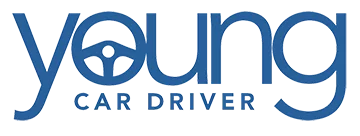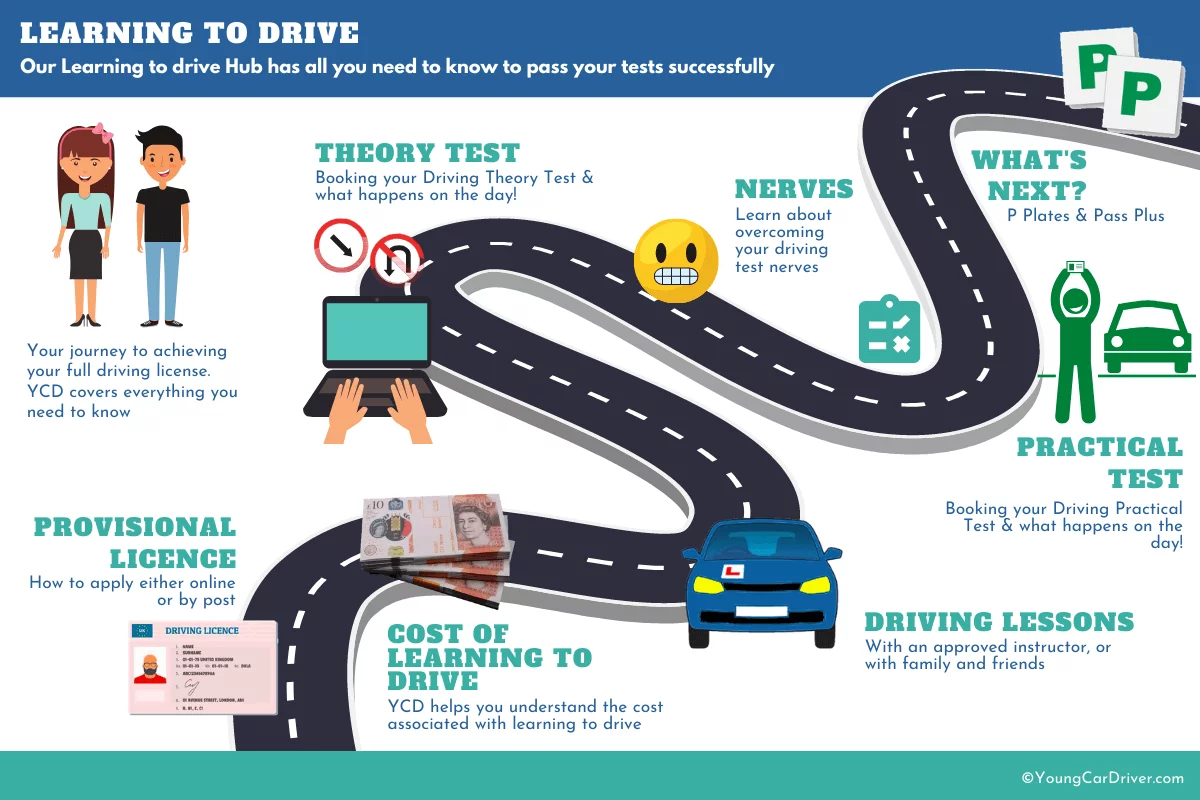Learning to Drive UK Do you need to Pass your Theory Test before Driving Lessons?
Before your test
Do you have to pass your theory test before starting driving lessons?
No, you can take driving lessons before taking your theory test, although you will need to have a provisional licence.
Taking your theory test in the early stages of learning to drive can be beneficial as it will help you become familiar with the Highway Code. The more you know, the safer you’ll be on the road, and you may be able to make faster progress with your lessons. Once you’ve passed your theory test, it remains valid for two years, so you have plenty of time to continue your driving lessons and move on to the practical test.
Applying for a provisional driving licence
Before getting behind the wheel with a professional driving instructor, friend, or family member, you’ll need to have a provisional driving licence. It can also serve as a useful form of official ID.
You can apply for a provisional driving licence through the official Gov UK website for a small fee.
You’ll need:
- To be able to read a number plate from 20 metres away
- A valid form of ID
- At least three years’ address history
Once you’ve applied and paid, your provisional licence will usually arrive within a week.
Can I drive with a provisional licence before taking my theory test?
Yes, you can start driving lessons before taking your theory test.
If you’re confused about what you need to do before starting to learn to drive, you’re not only. Over 50,000 people each month are searching for more information on the right order to follow.
Here’s our quick-fire answers to some of the most common questions:
- Do you need to pass your theory before taking driving lessons? NO
- Do you need your provisional licence to take your theory test? YES
- Do you need to pass theory test before driving lessons? No
- Do you have to pass your theory before your driving test? YES
- Do I need to pass my theory test before booking my practical? YES
- Can you book driving test without theory test? NO
- Can you take theory test before driving lessons? YES
- Can you do practical before theory? NO
Driving lessons
Once you’ve got your provisional licence sorted, it’s time to get behind the wheel and start driving lessons.
Wondering how much it costs to learn to drive? The total amount will depend on your individual circumstances and how long it takes for you to learn and pass your test. When calculating your budget, be sure to include the cost of lessons, learner driver insurance, and paying to take your theory and practical driving tests. You may also be able to save money by making block lesson bookings or practising with family or friends between lessons.
Practical driving lessons
Your first driving lesson can be a daunting experience. Choosing an instructor approved by the DVSA (Driver and Vehicle Standards Agency) that suits your personality, is experienced, and qualified is much more important than how much they charge. Try to find someone who makes you feel comfortable and who you’d be happy to spend a substantial amount of time sat alongside.
Once you’ve found the right fit, expect the instructor to do most of the driving at first. When it’s time for you to take a turn in the driving seat, you’ll usually be taken to a car park or quiet side street so that you can master the basics before tackling main roads.
The more time you spend on the road, the more your confidence will grow. Your instructor will then start to introduce you to manoeuvres like parallel parking and different road types.
The number of lessons you’ll need before passing your test will depend on your individual circumstances. The average learner needs around 45 hours of tuition, but there’s no legal minimum number of lessons that you need to have before passing your driving test.
If you’re keen to take things up a gear, consider booking an intensive driving course. These courses are designed to take you from 0 to 60 in as little as 7 days.
Supervised driving – learning to drive with family and friends
If you already have access to a vehicle and learner driver insurance, you can learn to drive with a close friend or family member as well as – or instead of – a professional instructor. In fact, the DVSA say the average driver needs 22 hours of additional practice outside of their formal lessons.
However, not everyone can teach you to drive, they must be over 21 years old and have held a full driving licence for at least three years. You’ll also likely want to choose someone who is calm and patient to help make the experience as stress-free as possible for both of you.
What is learner driver insurance?
Learner driver insurance covers you while practising driving with a parent or friend between lessons.
This insurance will be in your name and comes with certain restrictions but won’t affect the car owners no claims bonus if you’re involved in an accident.
Theory test
You must take your theory test before moving on to the practical. It covers all the rules of the road and helps you learn about the different obstacles and safety concerns you might encounter when driving.
There are several revision tools you can use including apps and mock tests. You also can’t go wrong by investing in a copy of the Highway Code.
You can book your theory test as soon as you have a provisional driving licence. Don’t worry if you need to change the theory test date once you’ve booked in; you can head online to make it earlier, later, or at a different test centre.
There are two parts of the test: a series of multiple-choice questions based on the Highway Code and a Hazard Perception test taking around 90 minutes in total to complete. Once you’ve passed, your certificate will be valid for two years.
Practical test
Once you’ve completed your theory test, your driving instructor will likely let you know when you’re ready to book your practical driving test. This may happen sooner rather than later depending on the waiting list in your area.
Don’t worry if you start to get nervous before and during the test. This is entirely natural, and there are steps you can take to ensure you stay as calm as possible. The person conducting the test will also be aware that learner drivers suffer from nerves and may do their best to reassure you.
Getting a good idea of what to expect on driving test day can also help combat any anxiety. Take time to understand what will happen before you get in the car, the questions you might be asked, and the manoeuvres that will be assessed. Check out our top tips for passing your driving test to find out more.
After the test
Congratulations! You’ve officially passed your driving test and can now legally drive on UK roads.
But what happens next?
If you already have a car, you’ll need to get it insured or be added as named driver on its existing policy. If you need to buy a car, you might want to get a car finance quote.
Once on the road, many newly qualified drivers feel more comfortable displaying P plates. These aren’t a legal requirement but they let other drivers know that you’ve only recently passed your test, so they should keep their distance and be a little more patient.
If you’re keen to build your skills and your confidence, you might also want to take a Pass Plus course. This is a practical driving course that gives you more experience driving in different locations, in different weather conditions, and on the motorway.
What are the top FAQs searched by learner drivers
Learn to Drive Menu
What to do before you take driving lessons
Get a Provisional licence
Before getting behind the wheel, you must have a provisional driving licence.
Research driving lessons costs
Driving lesson prices vary greatly depending on where you live in the UK.
How long will it take to learn?
Check out the seven steps to passing the driving test and the quickest way.

